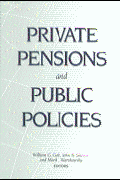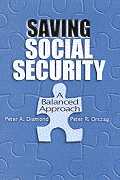The United States’ pension system has failed millions of workers who enter into retirement with very limited assets relative to what they need to live securely the rest of their lives. According to Survey of Consumer Finance data, about 40 percent of households headed by someone near retirement (ages 55–64) do not hold any assets in retirement savings accounts. The median retirement savings account balance for all households in this age group is only $12,000 (Rhee 2013).
At the same time, the pension landscape has been gradually shifting away from defined benefit (DB) pension plans toward defined contribution (DC) plans. The shift is especially pronounced in the private sector. Between 1989 and 2012, the proportion of private industry full-time workers participating in DB pension plans declined from 42 to 19 percent, while the share participating in DC plans increased from 40 to 51 percent (Bureau of Labor Statistics 2013; Wiatrowski 2011). While DB plans often provide significant benefits for the lucky minority who have been in a single job for many years before retirement, DC plans can be more beneficial for a mobile workforce. At the same time, the transition from DB to DC plans has also presented new challenges.
Because DB pensions are tied to employers, long-term workers sometimes achieve adequate protection even without much planning on their own part. They are automatically enrolled and often do not even have to contribute. Benefits are automatically paid when workers retire. With DB pensions, employers bear the responsibility for ensuring that employees receive pension benefits. In contrast, DC retirement accounts are owned by employees. With most DC plans, the most familiar of which are 401(k)-type plans, workers bear the responsibility for their own financial security. Unless such plans include automatic features, workers have to actively decide to participate, how much to contribute, which investments to put their money in, and how to manage their benefits through retirement.
As a result, 2013 participation rates among private wage-and-salary workers who were offered an employer retirement plan were 87 percent in DB pensions but only 71 percent in DC plans (Bureau of Labor Statistics 2013). Furthermore, workers in DC plans often contribute far less than the maximum statutory amount or what would be required to help secure their retirement. Using administrative data, Butrica and Smith (2012) find that workers’ median contribution in 2010—$2,488 (in 2011 dollars)—was well below the statutory maximum contribution limit ($16,500 or $22,000 if over age 50), even for the highest earners.
The benefits of 401(k)-type DC plans are also highly skewed toward higher-income workers. This occurs for several reasons. One, participation and contributions are highest among high-salary workers (Butrica and Smith 2012; Kawachi, Smith, and Toder 2005), with higher-income workers devoting especially high shares of their wages to retirement saving. Two, for each dollar saved, taxpayers in high tax brackets benefit the most from the tax preferences for DC plans. Thus, tax policy directly affects the amount of wealth individuals can accumulate during their working years to support themselves in retirement.
This paper focuses on the effects of the tax preferences for employer-sponsored defined contribution plans. Using two notable microsimulation models, we simulate the effect of changes in contribution limits to retirement plans, the saver’s credit, and the exclusion of contributions from taxable income on current and future taxes and retirement savings. We find that reducing 401(k) contribution limits would primarily increase taxes for the richest taxpayers; expanding the saver’s credit would raise saving incentives and lower taxes for low- and middle-income taxpayers; and removing the exclusion for retirement saving incentives and replacing it with a 25 percent refundable credit will benefit some taxpayers—mainly low- and middle-income taxpayers—while raising taxes and reducing retirement assets for others—primarily those at the top of the income distribution.
Our findings should be interpreted with caution. Actual legislation for flattening tax incentives requires more than the simple adjustments discussed here. For instance, if a credit-based approach is used, then the laws would need to ensure some recapture of those benefits for those who made contributions one year and withdrew them soon thereafter.
Additionally, the behavioral responses by both employers and employees will affect the final savings outcomes achieved under reform but are beyond the scope of our estimates. For instance, employees may save more in response to improved incentives, in which case the benefits to low lifetime income households would be greater than we find. On the other hand, employers might reduce their contributions in response to some of the policy changes outlined. In this case, the tax and savings benefits we find would be overstated. While our policy simulations are illustrative, addressing these behavioral responses would be a chief concern in tailoring specific policies to create the best incentives.
The Brookings Institution is committed to quality, independence, and impact.
We are supported by a diverse array of funders. In line with our values and policies, each Brookings publication represents the sole views of its author(s).









